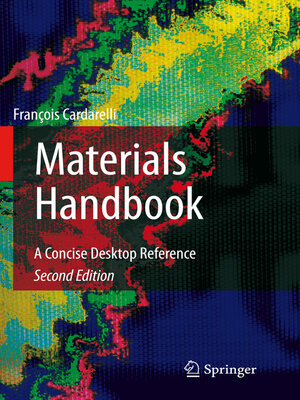
Sign up to save your library
With an OverDrive account, you can save your favorite libraries for at-a-glance information about availability. Find out more about OverDrive accounts.
Find this title in Libby, the library reading app by OverDrive.



Search for a digital library with this title
Title found at these libraries:
| Loading... |
Despite the wide availability of several comprehensive series in materials sciences and metallurgy, it is difficult to find grouped properties either on metals and alloys, traditional and advanced ceramics, refractories, polymers and elastomers, composites, m- erals and rocks, soils, woods, cement, and building materials in a single-volume source book. Actually, the purpose of this practical and concise reference book is to provide key scientific and technical materials properties and data to materials scientists, metallurgists, engineers, chemists, and physicists as well as to professors, technicians, and students wo- ing in a broad range of scientific and technical fields. The classes of materials described in this handbook are as follows: (i) metals and their alloys; (ii) semiconductors; (iii) superconductors; (iv) magnetic materials; (v) dielectrics and insulators; (vi) miscellaneous electrical materials (e.g., resistors, ther- couples, and industrial electrode materials); (vii) ceramics, refractories, and glasses; (viii) polymers and elastomers; (ix) minerals, ores, and gemstones; (x) rocks and meteorites; (xi) soils and fertilizers; (xii) timbers and woods; (xiii) cement and concrete; (xiv) building materials; (xv) fuels, propellants, and explosives; xxxviii Introduction (xvi) composites; (xvii) gases; (xviii) liquids.






